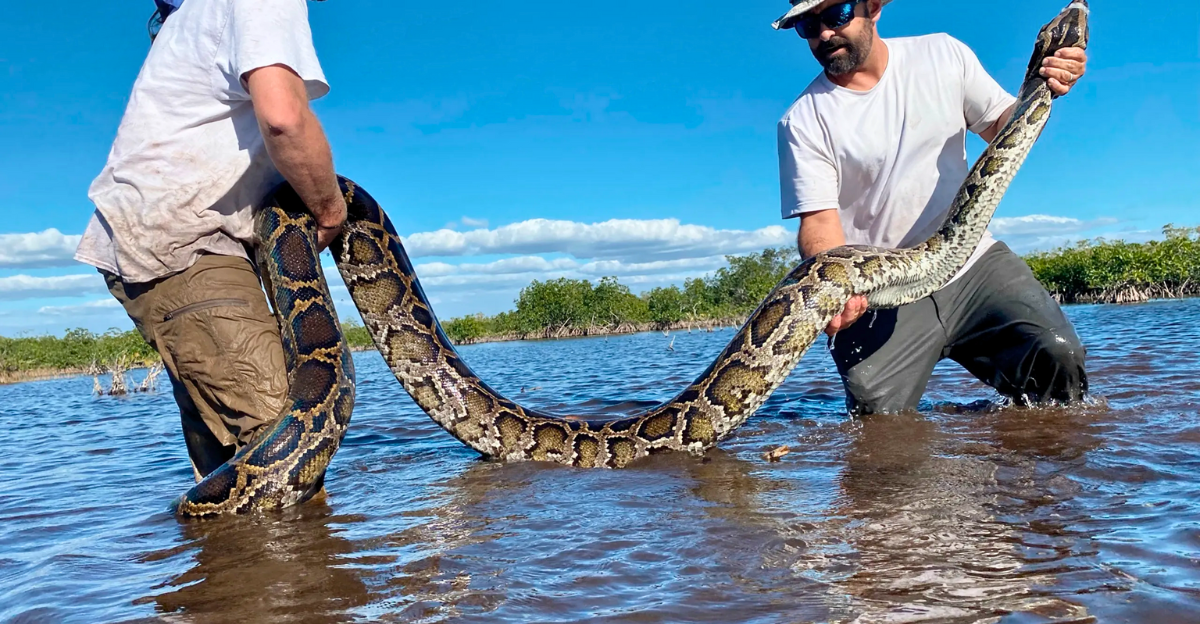
Florida’s Everglades is in crisis as the invasive Burmese python emerges as a new apex predator. These large constrictors have driven collapses in native prey: road surveys found raccoon sightings down >99% and opossums 99% since 2000.
They consume anything they can swallow, from rabbits and woodrats to alligators and white-tailed deer.
Having no natural enemies in Florida’s subtropical wetlands, the pythons now dominate over 1,000 square miles of habitat. This top-down pressure effectively rewrites the Everglades food web.
Silent Collapse
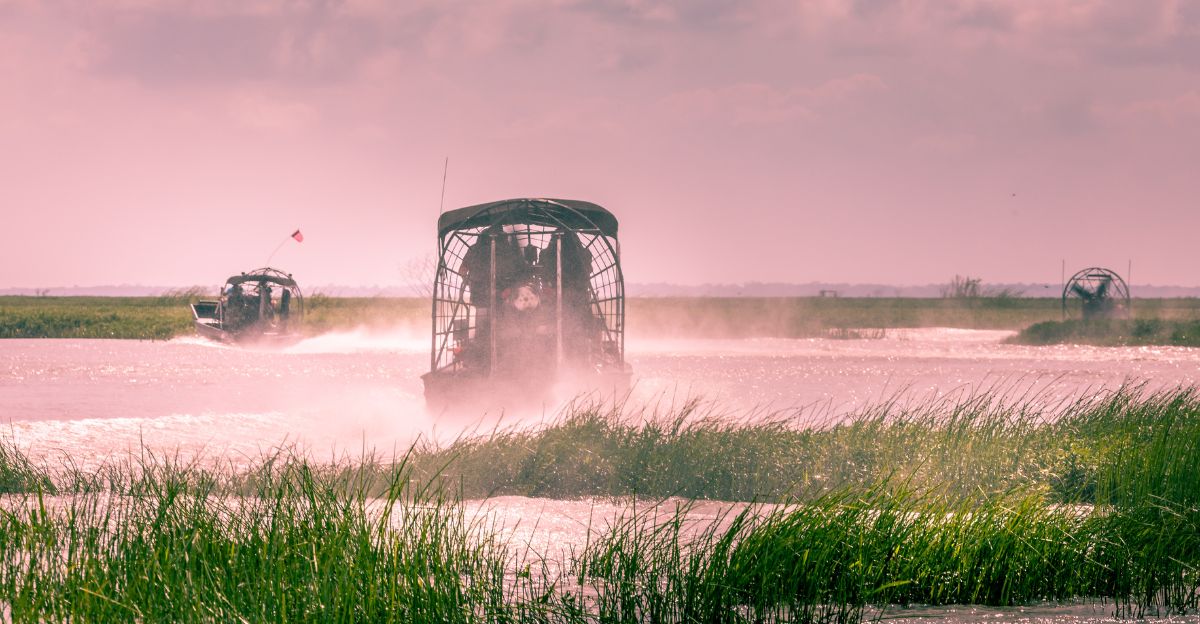
The evidence is everywhere. Extensive surveys of the Greater Everglades show mammal populations in free-fall. Scientists driving nearly 57,000 kilometers across Florida report that bobcat sightings have plunged ~87% and marsh rabbit or cottontail rabbits are virtually gone.
Other small carnivores like foxes have “effectively disappeared”. In total, pythons now prey on over 85 native species – from white-tailed deer and rabbits to endangered Key Largo woodrats and wood storks.
The silent vanishing of these familiar animals reveals just how dramatically the invasive snakes have altered the ecosystem.
Origins Unveiled
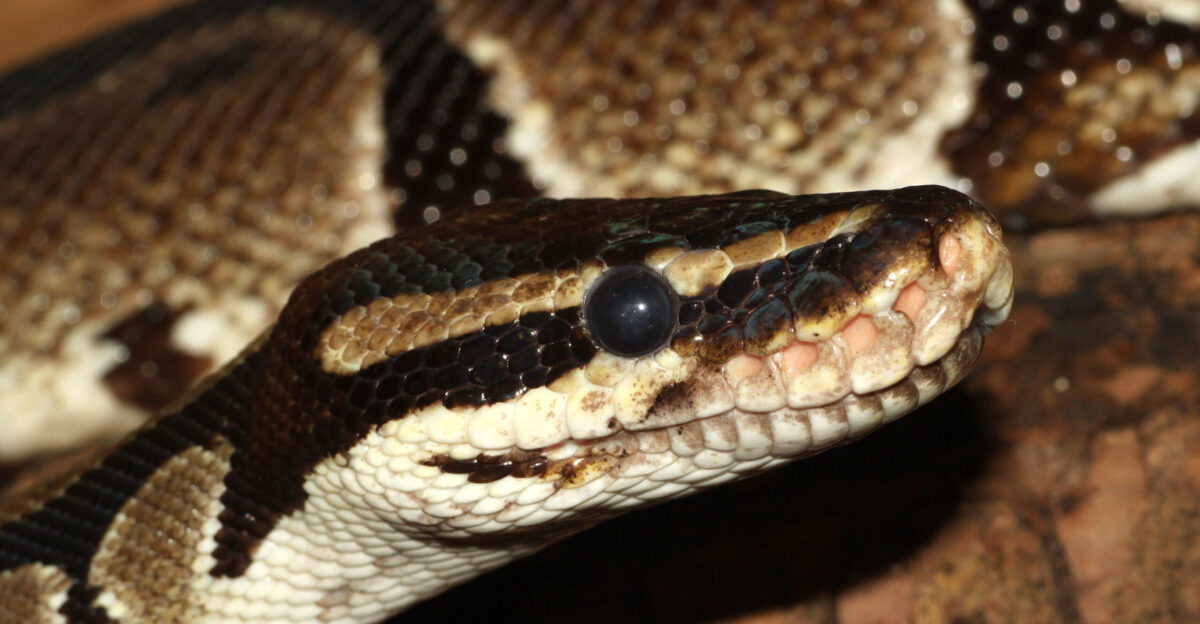
How did this invasion start? Florida first noted pythons by 1979, but Hurricane Andrew in 1992 remains a watershed event. Andrew decimated a South Florida reptile facility, releasing roughly 900 pythons into the wild.
Scientists now believe multiple smaller releases from the exotic-pet trade had already seeded breeding populations. With a subtropical climate and no predators, those escaped pets thrived in the Everglades.
By the late 1990s, the snakes were reproducing in earnest; by 2000, researchers could no longer ignore their explosive growth. From those early arrivals grew the burgeoning Python empire we see today.
Unstoppable Growth
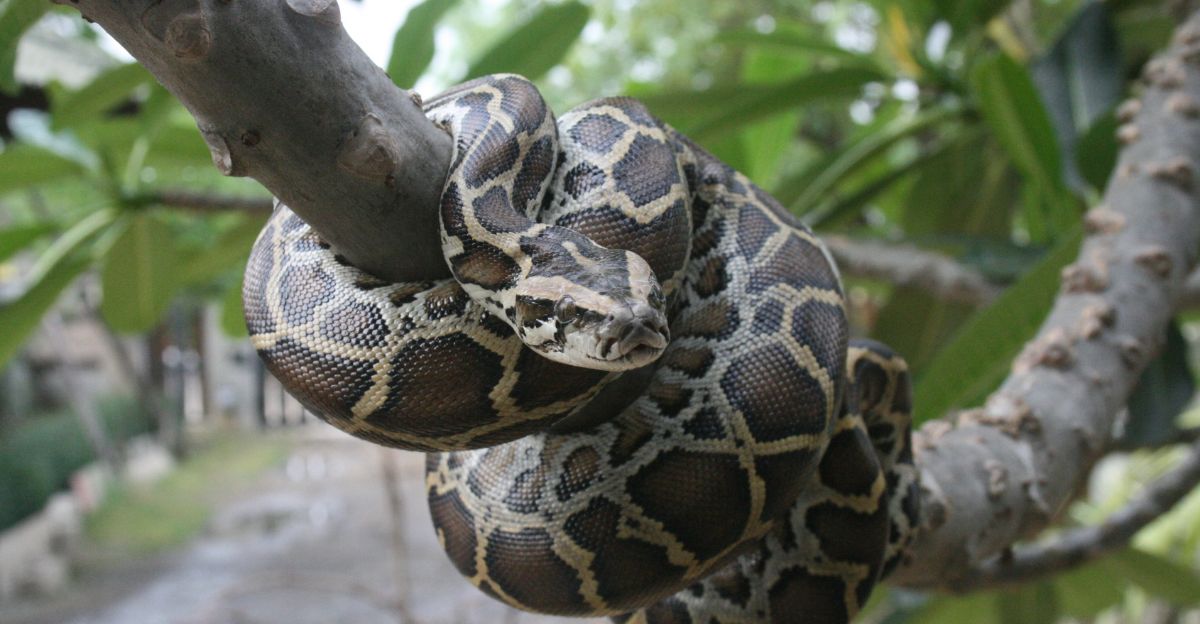
Today, Florida is estimated to hold on the order of 100,000–300,000 pythons in South Florida’s wetlands. These snakes can grow over 18–20 feet and 200 pounds, and they live for decades.
Females lay 50–100 eggs per clutch, and hatchlings reach maturity in just 3–4 years. With no predators (alligators won’t tackle a full-grown python), their population can double or triple each generation. At these rates, removal efforts struggle to keep pace.
Even conservative estimates (30–50k) seem overwhelming, and some field biologists have warned that the true number may approach half a million pythons roaming South Florida.
Historic Milestone
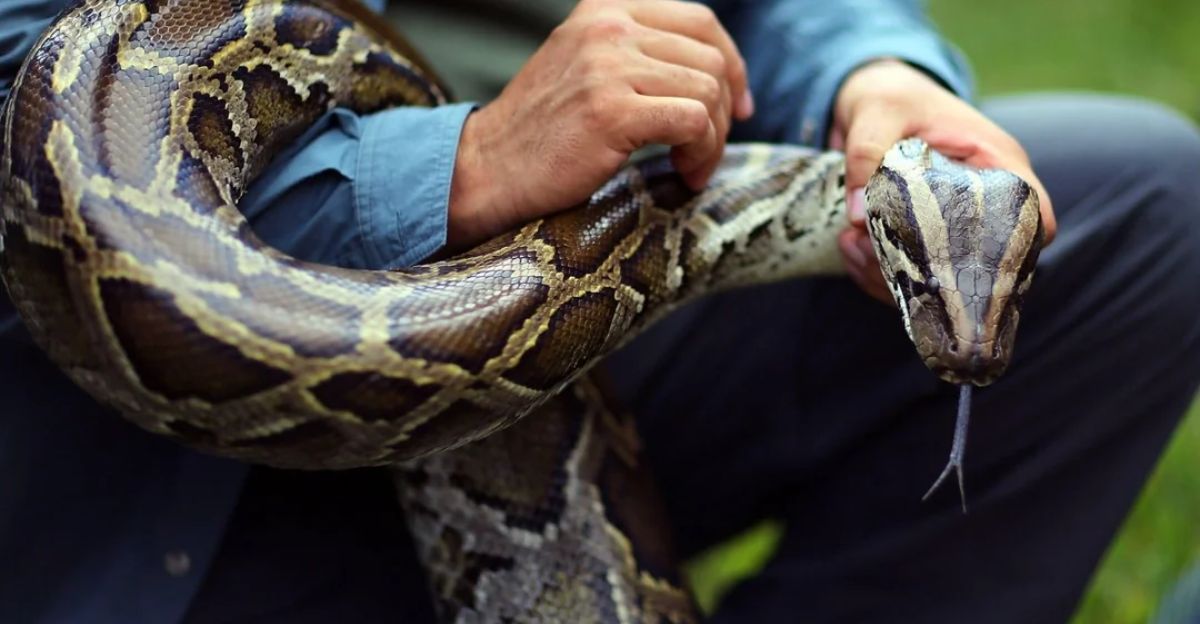
After years of painstaking work, conservationists recently marked a breakthrough: more than 20 tons of pythons have been removed from Southwest Florida since 2013. In 2025 alone, they hauled out a record 6,300 pounds from about a 200-square-mile zone.
All told, that’s over 40,000 pounds of apex predator eliminated from the ecosystem. Conservancy President Rob Moher says this effort is already helping native wildlife: “The python team’s work of reducing the local population … allows our native wildlife safer conditions to recover”.
These figures show that science-based tracking and removal can indeed counter years of snake population growth.
Regional Impact
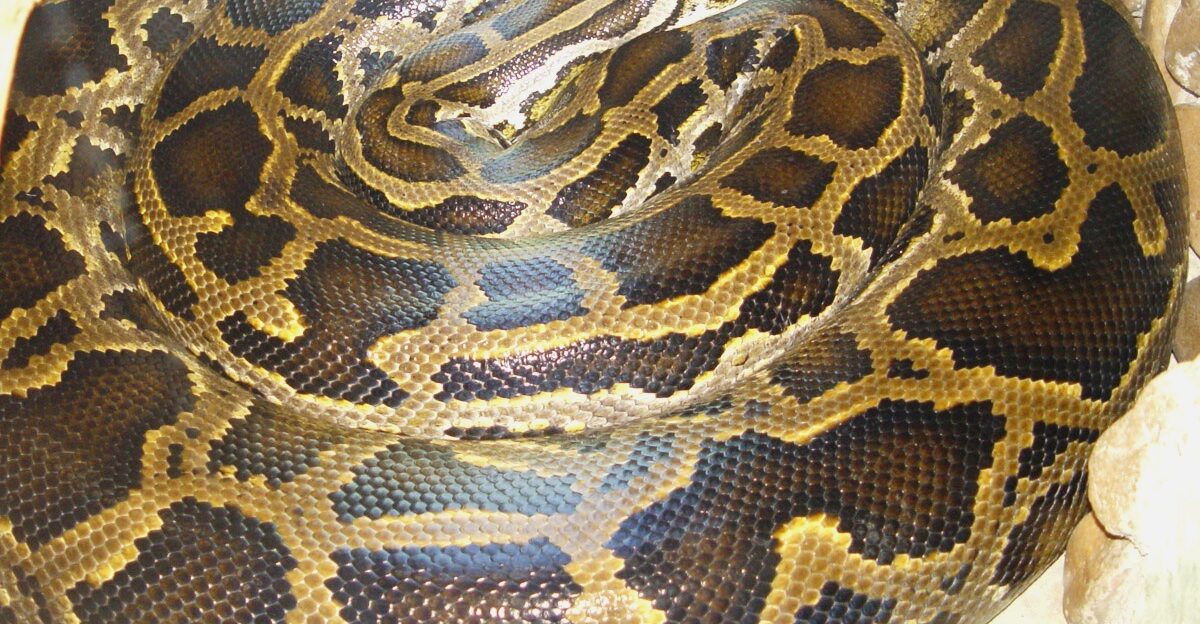
Southwest Florida is ground zero. From Naples through the western Everglades, the Conservancy of SW Florida works on public and private lands in Collier County – including Big Cypress and parts of Everglades National Park – to pull pythons from every corner.
This area overlaps with the von Arx Wildlife Hospital, which rehabilitates thousands of native animals. Each animal released from that hospital now faces renewed threat, because pythons recognize no park boundary.
Rob Moher stresses the stakes: the Conservancy removes snakes “as part of protecting our water, land, wildlife and future,” knowing every released bobcat or hawk has one fewer predator to worry about.
Human Stories
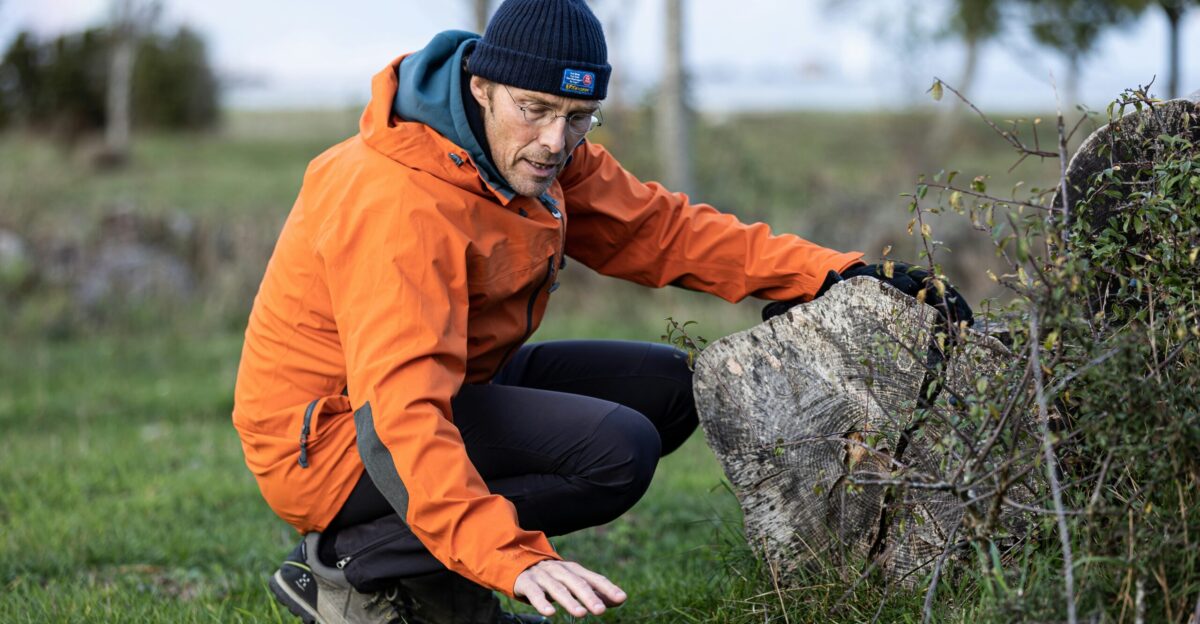
On the ground, the invasion is a physical and emotional slog. Conservancy biologist Ian Bartoszek describes the python program as a literal “heavy-lifting assignment,” hauling tons of snakes through swamps and mangroves.
His teams have unearthed record animals – an 18-foot female at 215 pounds and a 16-foot male at 140 pounds – each a testament to the pythons’ size. After seasons in the field, trackers often form bonds with their quarry. Bartoszek admits, “I don’t want to make it sound too melodramatic, but we do get connected to these animals”.
The loss of a veteran “scout” snake, for example, weighs heavily even on these tough professionals.
Government Response
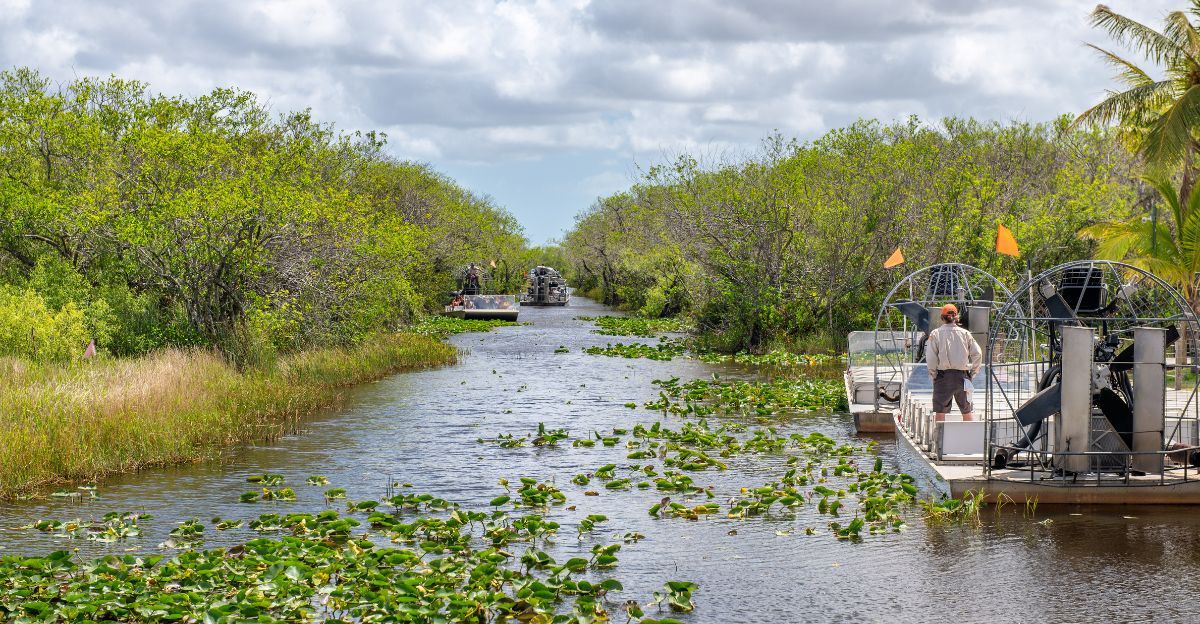
Florida agencies have mobilized like never before. Since 2017 the state’s Python Elimination teams have removed over 23,500 snakes statewide, a dramatic increase after the Fish & Wildlife Commission launched the Python Action Team.
Contractors (many veterans and wildlife specialists) scour the Everglades on foot, ATV, or by boat. They’re paid the equivalent of $8.46/hour plus bounties: $50 for any snake up to four feet and $25 for each additional foot. (A 10-foot python nets $125.)
This professional removal force – working under the SFWMD and FWC – has proven the most effective method yet of biting back against the invasion.
Global Context
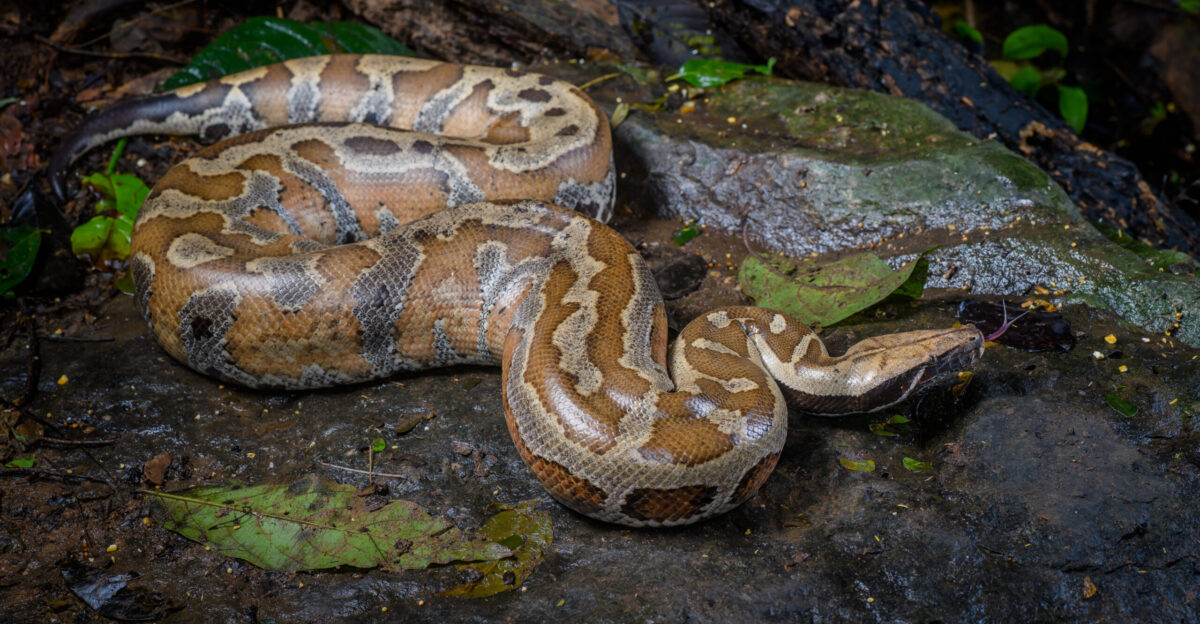
Florida’s python crisis is also a global warning. Invasive amphibians and reptiles have cost the world at least $17 billion in damages between 1986 and 2020. The Everglades saga underscores how a nonnative apex predator can decimate ecosystems.
It echoes other famous invasions (e.g. Guam’s brown-tree snake collapsing island bird life).
Scientists cite Florida as a case study: the findings (and ongoing experiments) will guide other regions battling exotic snakes, monitors, or frogs introduced via the pet trade.
Scientific Innovation

A turning point came with technology: radio telemetry and the so-called “scout snake” program.
Male pythons are captured and fitted with transmitters; during breeding season they naturally seek out females. Biologists simply follow these males to find reproductive nests.
This has rapidly identified and removed dozens of gravid females. Since 2013, it is estimated that roughly 20,000 python eggs have been prevented from ever hatching thanks to this method.
“We have a small window of time, and we try to maximize it,” says Bartoszek. He adds, “Valentine’s Day, you can usually find us on a pile of pythons,” referring to their search at peak mating season.
Internal Challenges
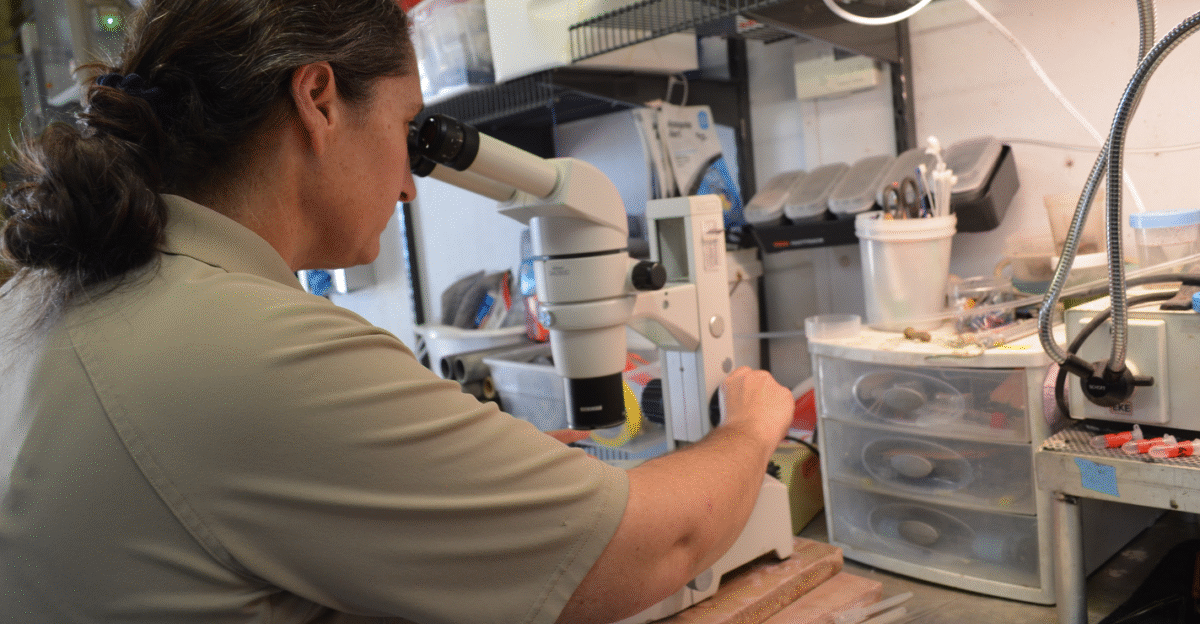
Even the scientists pay a price. Tracking snakes over the years can create emotional and ethical strain. Biologists spend months training and monitoring individual trackers that they will ultimately remove.
Bartoszek reflects on this conflict: they respect the snakes as creatures, even as they hunt them. When a long-term tracker known as “Loki” disappeared during one season, the team felt real loss.
They emphasize stoically that the sacrifice is necessary, but admit it can “feel like a crime scene” when an animal they’ve followed becomes a casualty. Each snake killed, after all, is one fewer potential threat to native wildlife.
Strategic Evolution
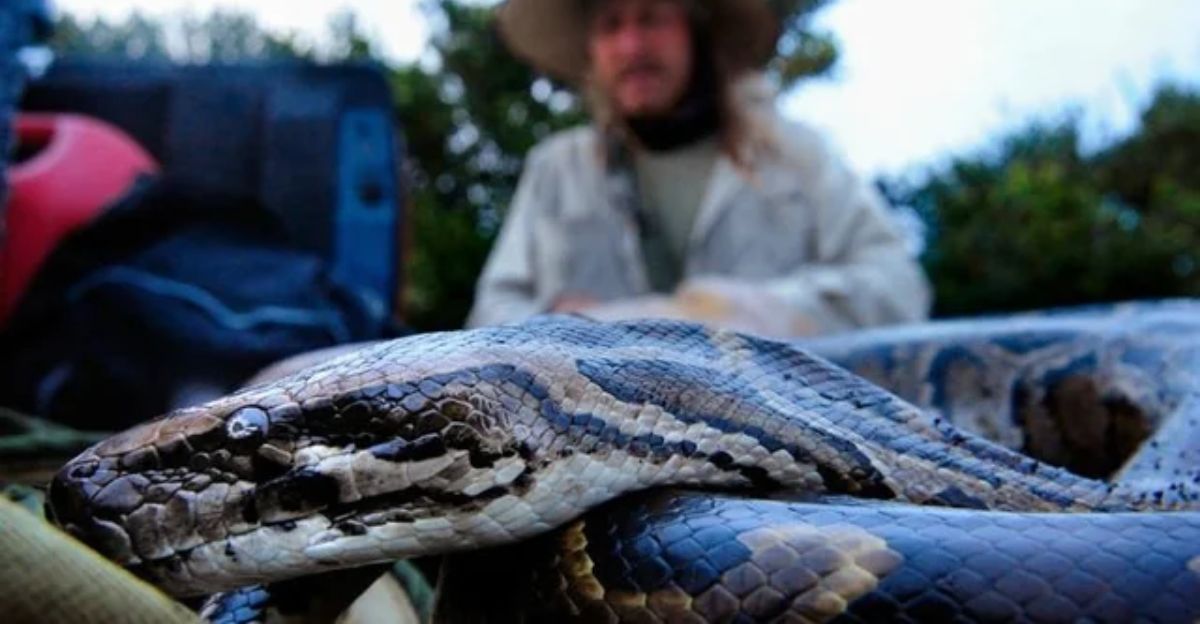
Public engagement has become part of the strategy. The annual Florida Python Challenge is now a major 10-day citizen-science event. In 2025, 934 competitors (from 30 states and Canada) paid an entry fee to hunt pythons across eight Everglades zones.
Together, they caught a record 294 snakes in just one season. The top prize – $10,000 – went to Taylor Stanberry, who netted 60 pythons. Each year, this competition not only ramps up removals, it also raises awareness and interest in invasive-species issues.
FWC Chairman Barreto notes that, combined with agency programs, more than 1,400 pythons have been removed through these challenges to date.
Recovery Efforts

Long-term monitoring offers cautious optimism. Biologists now report that tagged male pythons roam farther and find far fewer females in treated areas. And the few females located are smaller than in earlier years. In other words, the snakes are struggling to reproduce as prolifically as before.
These trends are signs that the removals are reducing local populations. At the same time, some Everglades predators are showing signs of adaptation. Field cameras have captured bobcats and rare indigo snakes preying on juvenile pythons.
These “wins for the home team” give wildlife experts hope that native species are beginning to respond to the python threat.
Expert Outlook

Most researchers now say total eradication is out of reach. University of Florida’s Jim Wellehan warns that Burmese pythons “have not just survived … they have thrived” in Florida.
With snakes capable of fasting six months, even large-scale hunts only knock down a few of the tens of thousands estimated.
Yet experts stress that removal still matters greatly: each adult captured eliminates dozens of future offspring. Florida FWC Chairman Rodney Barreto puts it bluntly: every python killed is “one less preying on our native birds, mammals and reptiles”. Over time, such efforts can stabilize vulnerable populations.
Future Questions
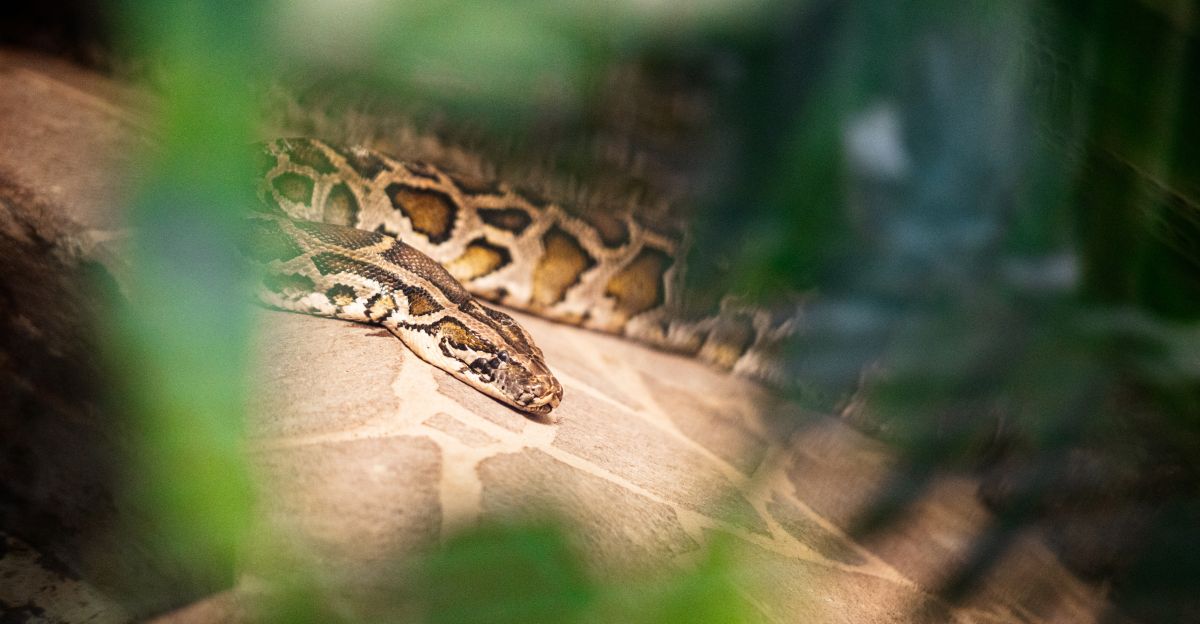
Looking ahead, many big questions remain. Can intensive removal truly suppress pythons across thousands of square miles indefinitely, or will unseen pockets always reignite the invasion? Will Florida’s native predators (bobcats, panthers, and even alligators) learn to exploit pythons as prey enough to help control them?
Biologists have seen glimmers: for example, they once surprised a bobcat killing one of their tracked pythons – “a win for the home team,” Bartoszek laughed.
But whether these events translate to ecosystem-scale control is unknown. The answers will determine if Florida’s experience is a scalable model or a cautionary tale in our fight against biological invaders.
Policy Implications

Policy has aimed to cut off the problem at its source. In 2012, the U.S. federal government banned any import or interstate commerce in Burmese pythons (they were listed under the Lacey Act).
Florida followed with its own prohibitions in recent years. Meanwhile, Governor DeSantis has repeatedly highlighted python removal in his environmental agenda.
In successive budgets he’s allotted record funding (e.g. $3 million in FY2022) for Everglades restoration and exotic-species response. State agencies like FWC, SFWMD and the National Park Service now coordinate large-scale, multi-million-dollar programs. Officials stress that lasting success requires sustained funding and partnerships across agencies.
International Lessons
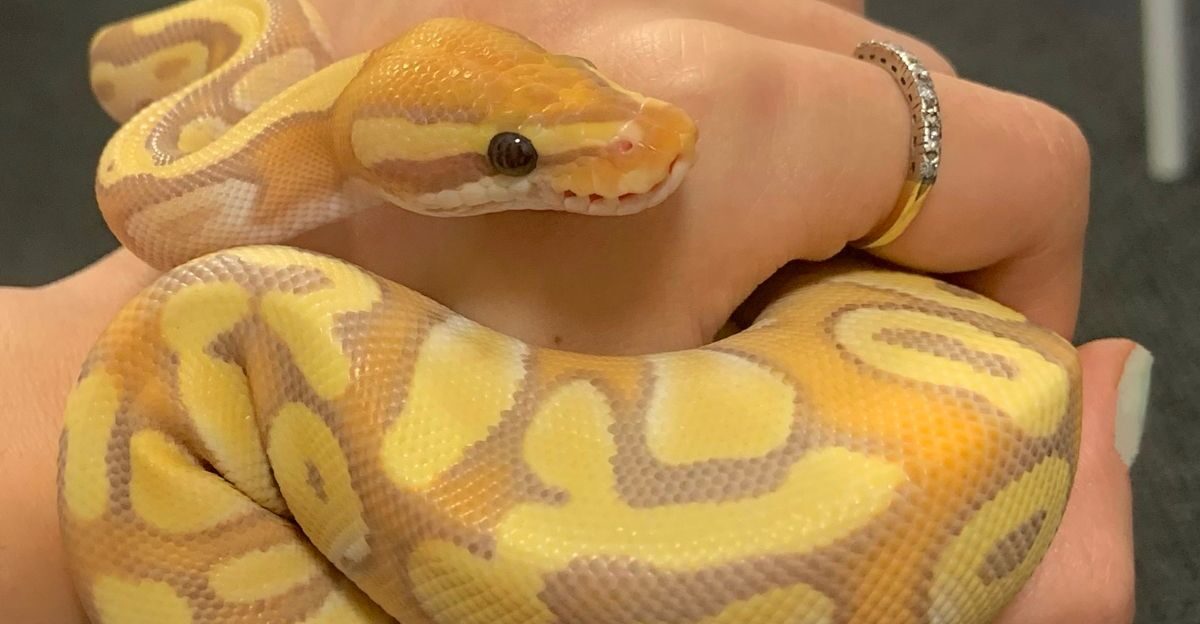
Florida’s struggle is not unique. Exotic predators have invaded ecosystems worldwide – from Guam’s brown-tree snake (which wiped out dozens of native birds) to pythons in Asian wetlands.
The Everglades case is instructive: it shows the urgency of stricter pet-trade controls and the value of rapid response. International scientists are watching closely, and dozens of research papers are now sharing what Florida has learned about python biology and control.
One study’s lead author notes the exotic-pet market is the main pathway for species like these. By adapting Florida’s tactics (tracking, community hunts, etc.), other regions can better prepare before an invader does irreversible damage.
Disease Dynamics
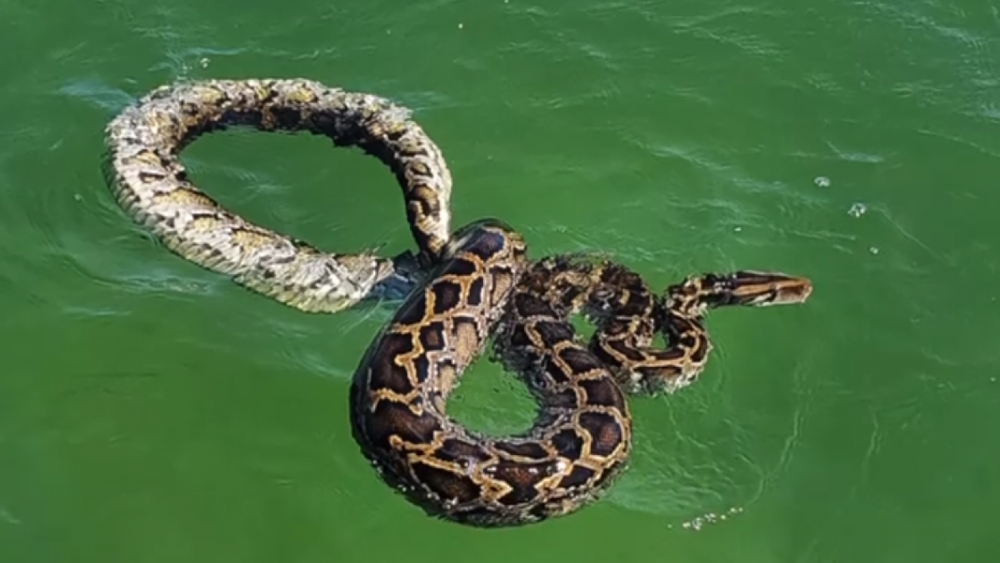
Pythons have brought more than predators – they also carry diseases. These snakes introduced a respiratory parasite (Raillietiella orientalis) from Asia into Florida’s waterways.
The flatworm infests python lungs harmlessly, but when it spills over into native reptiles (snakes, lizards, even amphibians), it causes severe lung inflammation and gasping.
Pythons are spreading a new pathogen to which Florida’s fauna have no defenses. This hidden threat adds a second layer of pressure on already-stressed populations.
Cultural Shift
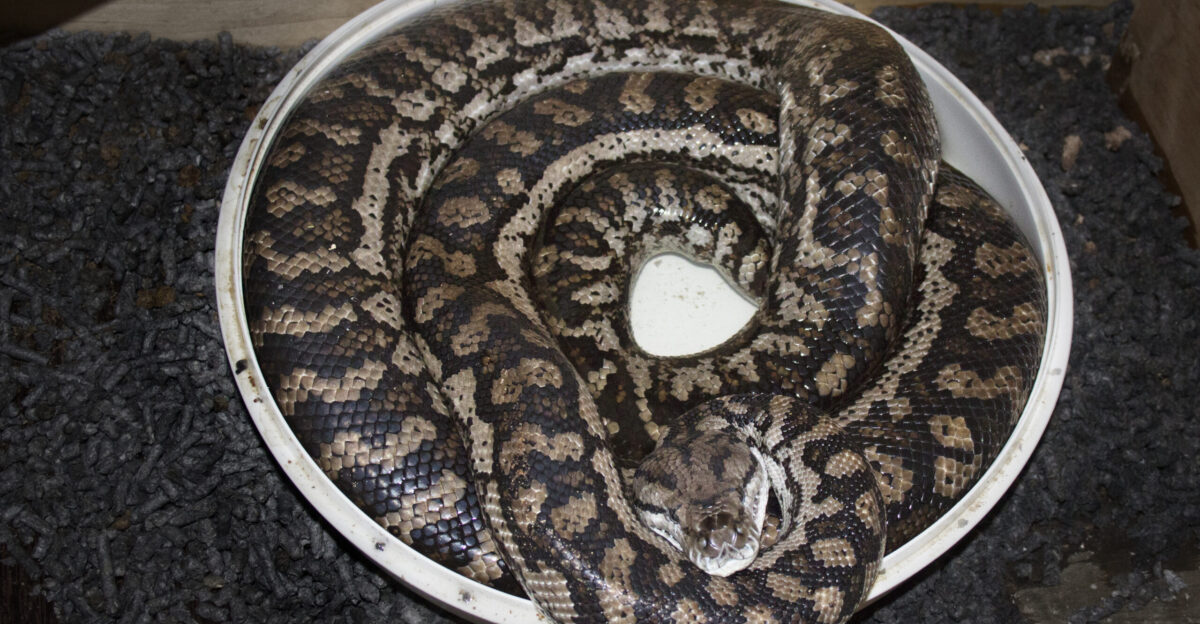
The python invasion is changing attitudes too. Huntress Taylor Stanberry – an Everglades science technician – became the first female champion of the Florida Python Challenge in 2025.
She downplays any thrill of killing snakes and emphasizes conservation: “It was tiring, but so worth it to save the native species here in Florida,” she told Fox News after hauling out 60 pythons. And she isn’t alone: many contractors now enter python hunting as a form of environmental service, not sport.
Stanberry plans to reinvest her $10,000 prize into expanding an animal sanctuary, underscoring that for many participants, python removal is about protecting wildlife, not recreation.
Broader Reflection
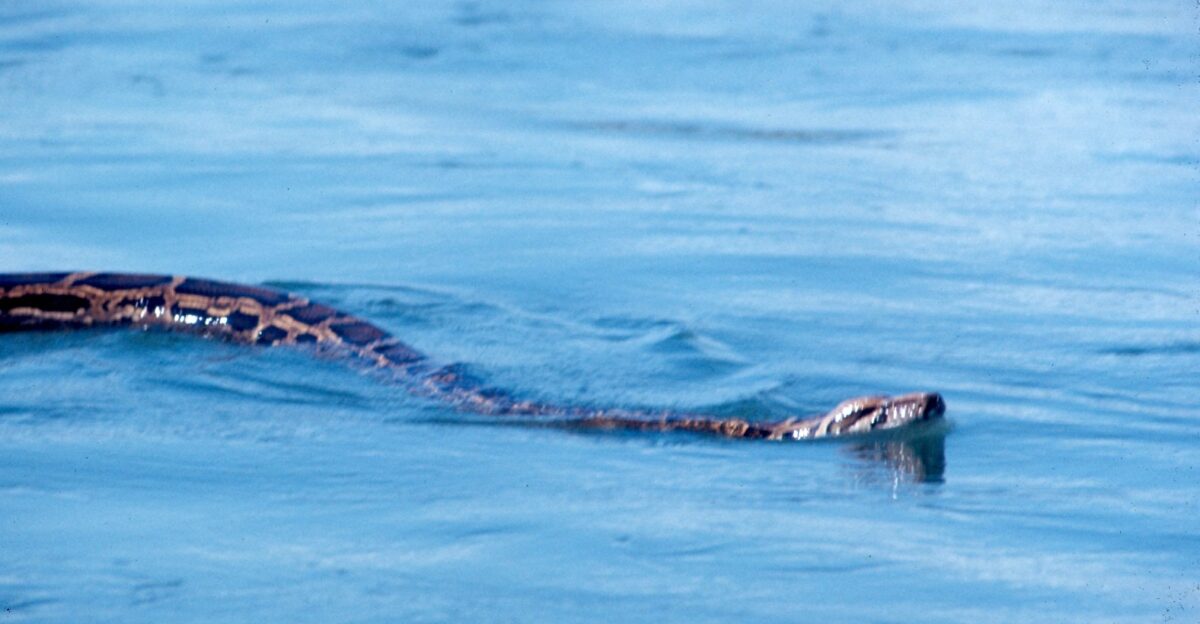
In the end, the 20-ton mark is more than a number – it tells a human story. It embodies both the damage we have wrought (through global pet trade and habitat loss) and the power of sustained science to push back. It took more than a decade of daily effort to clear 40,000 pounds of snakes.
Ecologists caution that the Everglades may never look entirely like it once did; some native species may take decades to recover. Still, Florida’s coordinated response offers a blueprint. By combining research, policy, and public action, conservationists have achieved measurable results against overwhelming odds.
How this battle ends will shape Florida’s legacy – and guide the world in managing the ever-rising tide of biological invasions.